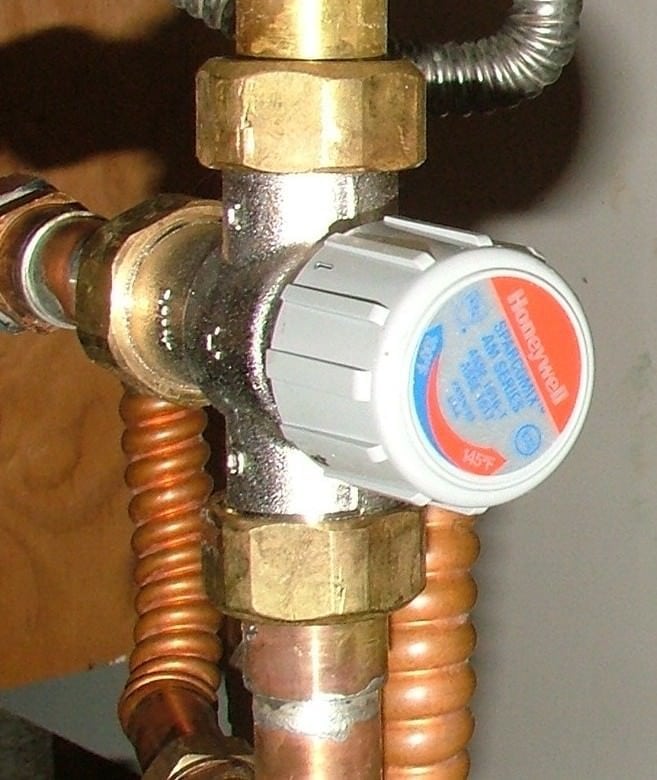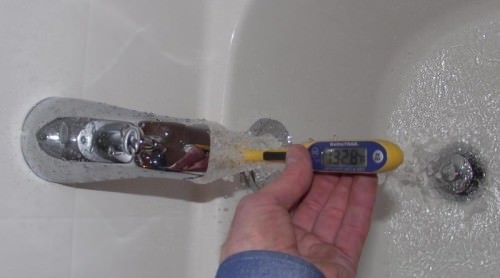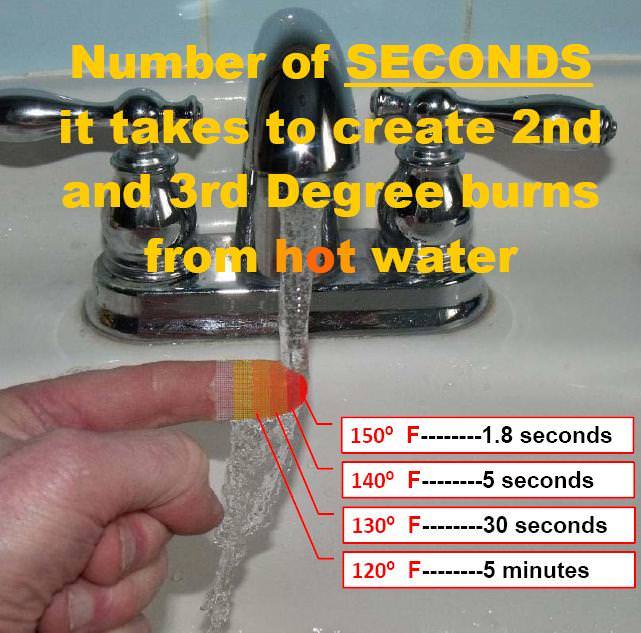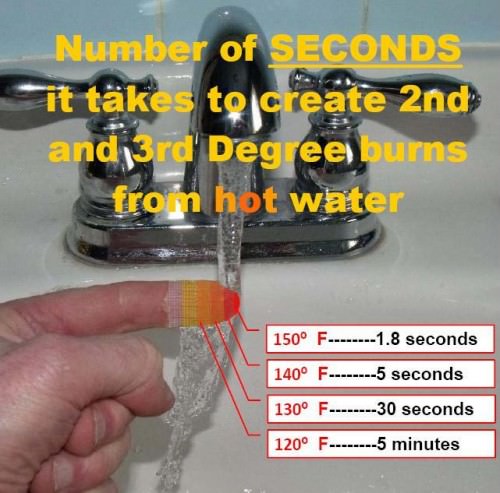
Having plenty of hot water is not just a convenience, it is considered a necessity in modern homes.
 However, there are competing concerns related to having plenty of hot water. On the one hand we want to prevent scalding. On the other hand it is a good idea to keep water hot enough to prevent water-borne bacteria from flourishing. It is actually quite complicated to accomplish both goals with storage-tank type water heaters. This is further complicated by Washington State Home Inspector Standards of practice that require us to report when the tested water temperature is above 120 degrees Fahrenheit (including a statement that the generally accepted safe temperature is 120 degrees Fahrenheit).
However, there are competing concerns related to having plenty of hot water. On the one hand we want to prevent scalding. On the other hand it is a good idea to keep water hot enough to prevent water-borne bacteria from flourishing. It is actually quite complicated to accomplish both goals with storage-tank type water heaters. This is further complicated by Washington State Home Inspector Standards of practice that require us to report when the tested water temperature is above 120 degrees Fahrenheit (including a statement that the generally accepted safe temperature is 120 degrees Fahrenheit).
This information however only address one of the safety concerns–and can actually make the other concern worse. Temperature below 120 degrees Fahrenheit is considered ideal for the growth of harmful bacteria inside the tank–such as Legionella. Keeping the tank temperature between 135 and 140 degrees Fahrenheit can greatly reduce the risk of growing bacteria in the tank but is not a guarantee. For example, Legionella Bacteria can survive extreme hot water and chemical treatment by forming a parasitic relationship with amoebae that are not affected by these treatments. While rare, it is still considered prudent, given the current state of knowledge, to maintain the tank water temperature between 135 and 140 degrees Fahrenheit to at least provide some degree of protection.
 Electric water heaters are considered to represent the highest risk, while gas fired water heaters represent the lowest risk. Resolving this difficult issue is perhaps the strongest argument one can make for on-demand type water heaters that do not have this issue as no stored water is present. Homes with copper type pipes are also at lower risk while areas with hard water are considered at greater risk. Non-chlorinated water supply systems are at higher risk (wells).
Electric water heaters are considered to represent the highest risk, while gas fired water heaters represent the lowest risk. Resolving this difficult issue is perhaps the strongest argument one can make for on-demand type water heaters that do not have this issue as no stored water is present. Homes with copper type pipes are also at lower risk while areas with hard water are considered at greater risk. Non-chlorinated water supply systems are at higher risk (wells).
While “generally-healthy-people” are fairly resistant to infection, some patient populations (organ transplants, diabetes, cancers, kidney disease etc), immunocompromised persons, heavy smokers, heavy drinkers, the elderly and infants can be expected to have higher death rates or incidence of more severe illness if the bacteria is present in sufficient numbers. Some authorities assert that an increase in incidence can be expected with an increased focus on conserving energy (lowering the thermostat on the water heater). The science around all of this is ongoing and new information should be anticipated.
But what about scalding? Preventing scalding requires a multifaceted approach. #1. We must resort to common sense: • Never leave a child or the infirm alone while drawing water in a bathtub, and check the water temperature before putting your child or the infirm in the tub. • Test the water temperature before bathing or showering. • Turn the cold water on first, then add hot water until the temperature is comfortable. • Teach children to turn the cold water on first, and the hot water off first. #2. Provide a mechanical means (Thermostatic mixing valve) of lowering the temperature to below 120 degrees Fahrenheit at either the points of use or at the water heater itself to protect the whole house. Because these devices can fail, we must always keep #1 in mind.
For additional information on this issue please check out the links below:
http://EPA/Legionella: Drinking Water Fact Sheet
http://EPA/Legionella: Drinking Water Health Advisory
https://OSHA/Domestic Hot Water Systems
http://Wikipedia/Legionella
http://Wikipedia/Legionnaires’ Disease
Charles Buell, Real Estate Inspections in Seattle




